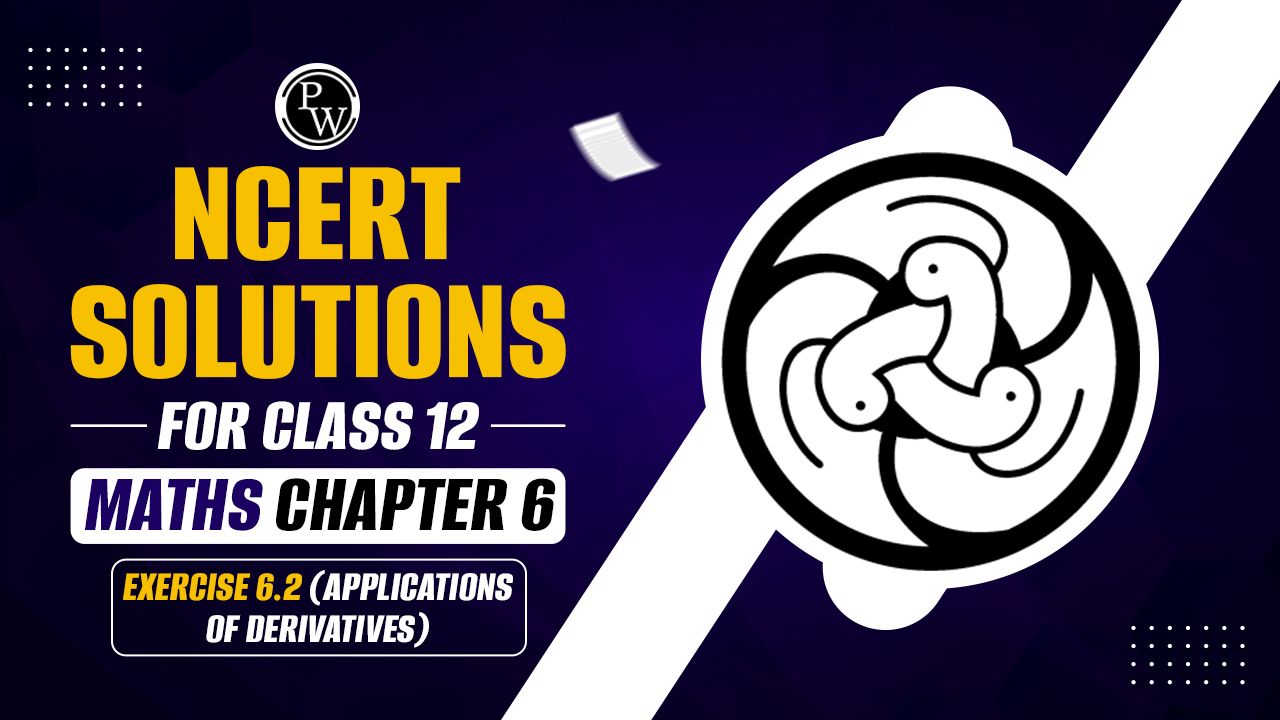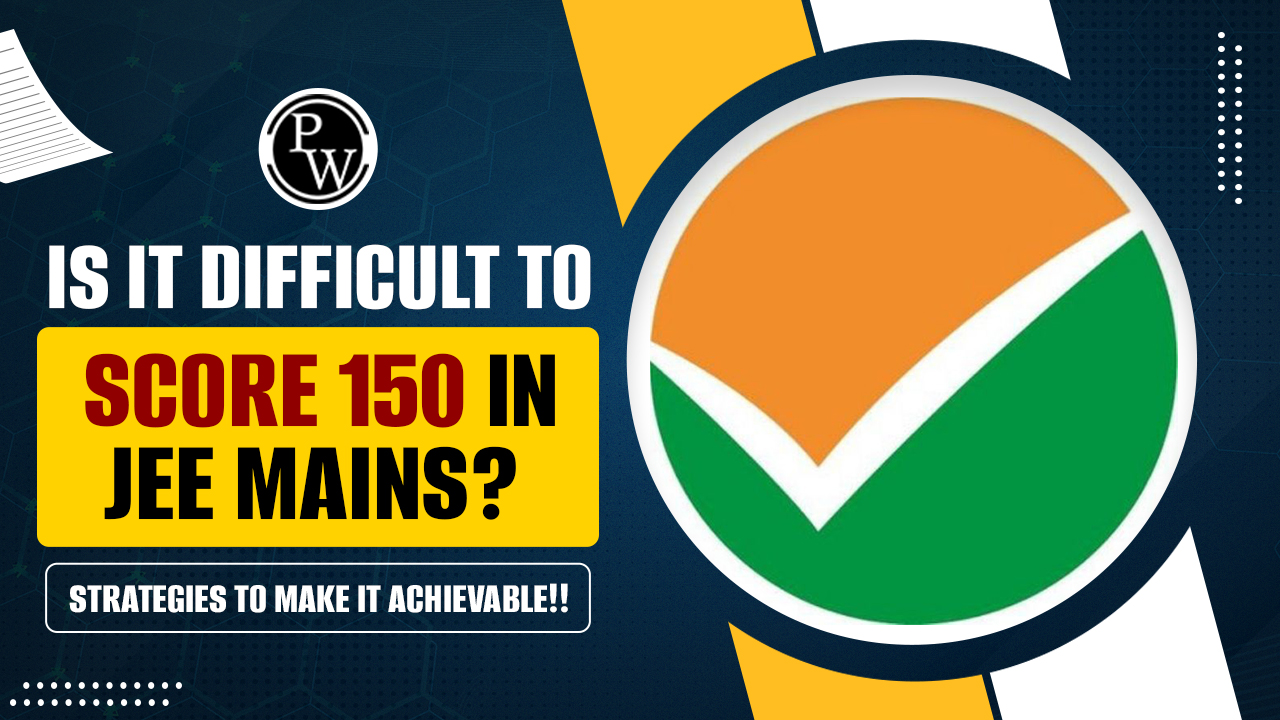NCERT Solutions for Class 12 Maths Chapter 6 Exercise 6.2 (Applications of Derivatives)

Class 12 Maths Chapter 6 Exercise 6.2 (Applications of Derivatives):- Chapter 6 of Class 12 Maths, "Applications of Derivatives," Exercise 6.2, explores practical applications of calculus concepts. It focuses on using derivatives to find rates of change, identify maximum and minimum values of functions, solve related rates problems, and optimize quantities under constraints. These applications illustrate calculus' crucial role in analyzing real-world scenarios across various disciplines, from economics to engineering, by leveraging derivative techniques to make informed decisions and solve complex problems efficiently.
Check out: CBSE Class 12th Books
NCERT Solutions for Class 12 Maths Chapter 6 Exercise 6.2 (Applications of Derivatives)
Go through the NCERT Solutions for Class 12 Maths Chapter 6 Exercise 6.2 (Applications of Derivatives) below:-
Question 1. Show that the function given by f(x) = e2x is strictly increasing on R.
Solution : Given: f'(x) = e2x
Now,
x ∈ R
Since the value of e2x is always positive for any real value of x, e2x > 0.
⇒2e2x > 0
⇒f'(x) > 0
So f(x) is incerasing on R.
Question 2. Show that the function given by f(x) = 3x + 17 is strictly increasing on R.
Solution :
Question 3. Show that the function given by f(x) = sin x is
(a) strictly increasing (0,π/2) (b) strictly decreasing in (π/2,π) (c) neither increasing nor decreasing in (0,π)
Solution : Given:
The given function is f(x) = sin x.
Check out: Class 12 Maths Sample paper
Question 4. Find the intervals in which the function F given by 2x2 – 3x is (a) strictly increasing, (b) strictly decreasing.
Solution : Given:
Question 5. Find the intervals in which the function F given by f(x) = 2x3 − 3x2 − 36x + 7 is (a) strictly increasing, (b) strictly decreasing.
Solution : (a)Given:
Question 6. Find the intervals in which the following functions are strictly increasing or decreasing:
(a) x2 + 2x − 5 (b) 10 − 6x − 2x2
(c) −2x3 − 9x2 − 12x + 1 (d) 6 − 9x − x2
(e) (x + 1)3 (x − 3)3
Solution :
(a) Given:
Check out: Class 12th Question Banks
Question 7. Show that is an increasing function of x throughout its domain.
Solution :
Given:
∴dydx=11+x-(2+x)(2)-2x(1)(2+x)2=11+x-4(2+x)2=x2(1+x)(2+x)2
Now, dydx=0
⇒x2(1+x)(2+x)2=0⇒x2=0 [(2+x)≠0 as x>-1]⇒x=0
Since x > -1 , point = 0 divides the domain (−1, ∞) in two disjoint intervals i.e., −1 < x < 0 and x > 0
When −1 < x < 0, we have:
x<0⇒x2>0x>-1⇒(2+x)>0⇒(2+x2)>0
∴ y’=x2(1+x)(2+x)2>0
Also, when x > 0
x>0⇒x2>0, (2+x)2>0
∴ y’=x2(1+x)(2+x)2>0
Hence, function f is increasing throughout this domain
Question 8. Find the value of x for which is an increasing function.
Solution :
Question 9. Prove that is an increasing function of θ in [0, π/2]
Solution :
Question 10. Prove that the logarithmic function is strictly increasing on (0,∞)
Solution :
Given: The given function is f(x) = logx
∴ f'(x) = 1/x
It is clear that for x > 0, f'(x) = 1/x > 0.
Hence, f(x) = log x is strictly increasing in interval (0, ∞).
Question 11. Prove that the function f given by f (x) = x2 – x + 1 is neither strictly increasing nor strictly decreasing on (-1,1)
Solution :
Given: The given function f (x) = x2 – x + 1
hence,f is neither strictly increasing nor decreasing on the interval (-1,1)
Question 12. Which of the following functions are strictly decreasing on (0,π/2)
(A) cos x
(B) cos 2x
(C) cos 3x
(D) tan x
Solution :
Question 13. On which of the following intervals is the function f given by f(x) = x100 + sinx – 1 is strictly decreasing:
(A) (0, 1)
(B) (π/2,π)
(C) (0,π/2)
(D) None of these
Solution :
Given:
Question 14. Find the least value of a such that the function f given by f(x) = x2 + ax + 1 strictly increasing on (1, 2).
Solution :
Check out: Class 12th Sample Papers
Question 15. Let I be any interval disjoint from (-1,1) Prove that the function f given by f(x) = x + 1/x is strictly increasing on I.
Solution :
Given:
∴ f is strictly increasing on (-∞, 1) and (1, ∞)
Hence, function f is strictly increasing in interval I disjoint from (−1, 1).
Hence, the given result is proved.
Question 16. Prove that the function f given by f(x) = log sin x is strictly increasing on (0,π/2) and strictly decreasing on (π/2,π)
Solution :
Given:
Question 17. Prove that the function f given by f(x) = log cos x is strictly decreasing on (0,π/2) and strictly decreasing on (π/2,π)
Solution :
Given:
On the
Question 18. Prove that the function given by f(x) = x3 – 3x2 + 3x – 100 is increasing in R.
Solution :
Given:
Question 19. The interval in which y = x2 e-x is increasing in:
(A) (-∞, ∞)
(B)(-2,0)
(C) (2, ∞)
(D) (0, 2)
Solution :
Given:
Class 12 Maths Chapter 6 Exercise 6.2 (Applications of Derivatives) Summary
-
Rate of Change: Using derivatives to calculate how one quantity changes concerning another, crucial for understanding dynamics in fields like physics and economics.
-
Maxima and Minima: Application of derivative tests to identify maximum and minimum values of functions, essential for optimizing processes and resources.
-
Related Rates: Solving problems where multiple variables change over time, and their rates of change are interconnected, illustrating calculus' role in modeling real-world relationships.
-
Optimization: Utilizing derivatives to optimize quantities under constraints, such as maximizing profit or minimizing cost, demonstrating calculus' application in decision-making contexts.
Class 12 Maths Chapter 6 Exercise 6.2 (Applications of Derivatives) FAQs
Q1. What is the purpose of studying applications of derivatives?
Ans. Understanding applications of derivatives helps in solving real-world problems involving rates of change, optimization, and related rates.
Q2. How are derivatives used to find rates of change?
Ans. Derivatives quantify how quickly one quantity changes concerning another, crucial for understanding motion, growth, and decay in various scenarios.
Q3. What is meant by finding maxima and minima using derivatives?
Ans. Derivatives help identify maximum and minimum points of functions, essential for optimizing processes such as maximizing profit or minimizing cost.
Q4. Can derivatives solve related rates problems?
Ans. Yes, derivatives establish relationships between changing quantities over time, enabling the solution of problems where rates of change are interconnected.
Q5. What are optimization problems in the context of derivatives?
Ans. Optimization problems involve using derivatives to find optimal values of quantities under constraints, commonly seen in maximizing revenue or minimizing production costs.









